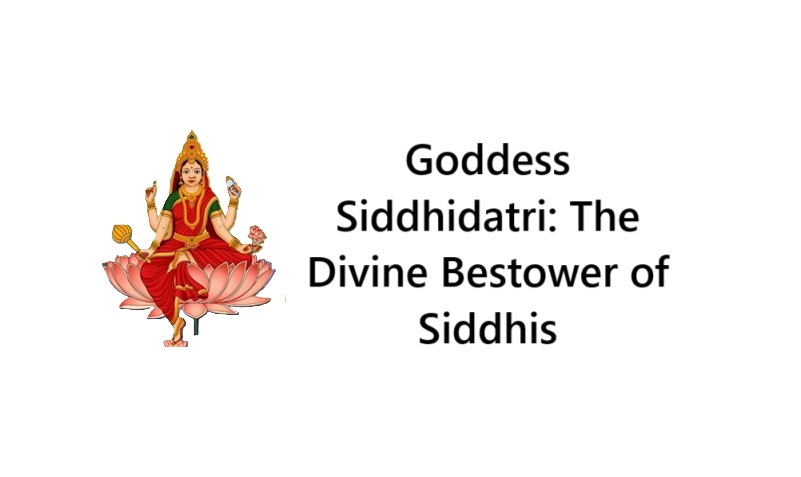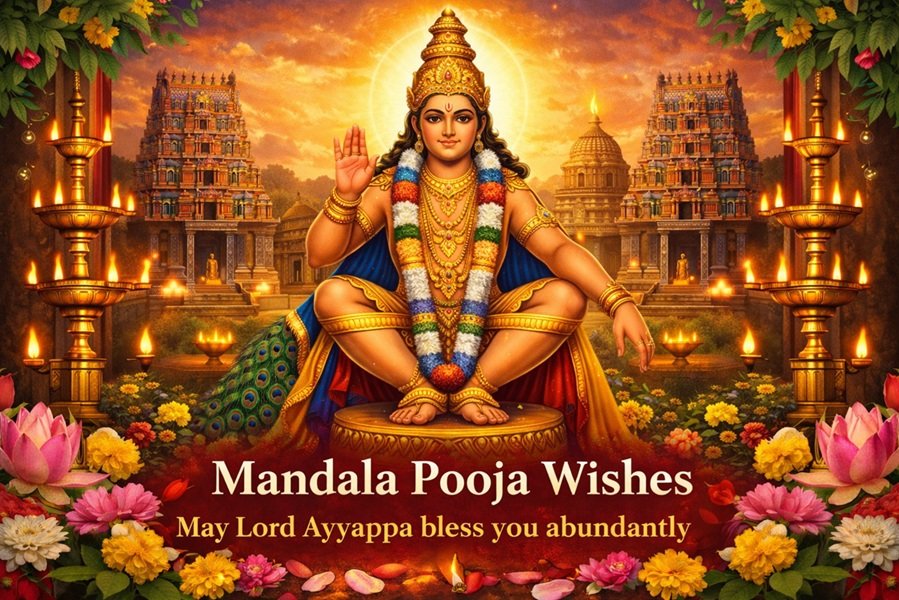
Origin & Navratri Worship
In the beginning of the universe, Lord Rudra worshipped Adi-Parashakti for the creation of existence. It is believed that Goddess Adi-Parashakti had no physical form. As the supreme Goddess of Power, she manifested herself as Siddhidatri, emerging from the left half of Lord Shiva. This divine manifestation symbolizes the union of masculine and feminine energies, granting Lord Shiva the title of Ardha-Narishwar.
Goddess Siddhidatri is venerated on the ninth day of Navratri, marking the culmination of this grand festival dedicated to the nine forms of Goddess Durga. Devotees seek her blessings to attain spiritual knowledge and divine powers.
Governing Planet
Goddess Siddhidatri is believed to provide direction and energy to the planet Ketu. Hence, Ketu is governed by her divine influence, which is associated with spirituality, detachment, and enlightenment.
Iconography
Goddess Siddhidatri is depicted as a serene and powerful deity, seated gracefully on a lotus (Kamal) and sometimes riding a lion, signifying courage and strength. She is portrayed with four hands, each holding symbolic elements:
- A Gada (mace) in one right hand, representing strength.
- A Chakra (discus) in the other right hand, symbolizing control over time and cosmic order.
- A lotus flower in one left hand, signifying purity and spiritual awakening.
- A Shankh (conch shell) in the other left hand, representing the primordial sound of creation.
Divine Attributes and Worshippers
Goddess Siddhidatri is revered as the bestower of all Siddhis (spiritual and mystical attainments). Even Lord Shiva, the supreme ascetic, received all his Siddhis by her grace. She is not only worshipped by humans but also by celestial beings like Devas, Gandharvas, Asuras, Yakshas, and Siddhas, who seek her divine blessings for supreme spiritual knowledge and power.
Mantra
ॐ देवी सिद्धिदात्र्यै नमः॥
Prarthana
सिद्ध गन्धर्व यक्षाद्यैरसुरैरमरैरपि।
सेव्यमाना सदा भूयात् सिद्धिदा सिद्धिदायिनी॥
Stuti
या देवी सर्वभूतेषु माँ सिद्धिदात्री रूपेण संस्थिता। नमस्तस्यै नमस्तस्यै नमस्तस्यै नमो नमः॥
Dhyana
वन्दे वाञ्छित मनोरथार्थ चन्द्रार्धकृतशेखराम्।
कमलस्थिताम् चतुर्भुजा सिद्धीदात्री यशस्विनीम्॥
स्वर्णवर्णा निर्वाणचक्र स्थिताम् नवम् दुर्गा त्रिनेत्राम्।
शङ्ख, चक्र, गदा, पद्मधरां सिद्धीदात्री भजेम्॥
पटाम्बर परिधानां मृदुहास्या नानालङ्कार भूषिताम्।
मञ्जीर, हार, केयूर, किङ्किणि रत्नकुण्डल मण्डिताम्॥
प्रफुल्ल वन्दना पल्लवाधरां कान्त कपोला पीन पयोधराम्।
कमनीयां लावण्यां श्रीणकटिं निम्ननाभि नितम्बनीम्॥
Stotra
कञ्चनाभा शङ्खचक्रगदापद्मधरा मुकुटोज्वलो।
स्मेरमुखी शिवपत्नी सिद्धिदात्री नमोऽस्तुते॥
पटाम्बर परिधानां नानालङ्कार भूषिताम्।
नलिस्थिताम् नलनार्क्षी सिद्धीदात्री नमोऽस्तुते॥
परमानन्दमयी देवी परब्रह्म परमात्मा।
परमशक्ति, परमभक्ति, सिद्धिदात्री नमोऽस्तुते॥
विश्वकर्ती, विश्वभर्ती, विश्वहर्ती, विश्वप्रीता।
विश्व वार्चिता, विश्वातीता सिद्धिदात्री नमोऽस्तुते॥
भुक्तिमुक्तिकारिणी भक्तकष्टनिवारिणी।
भवसागर तारिणी सिद्धिदात्री नमोऽस्तुते॥
धर्मार्थकाम प्रदायिनी महामोह विनाशिनीं।
मोक्षदायिनी सिद्धीदायिनी सिद्धिदात्री नमोऽस्तुते॥
Kavacha
ॐकारः पातु शीर्षो माँ, ऐं बीजम् माँ हृदयो।
हीं बीजम् सदापातु नभो गृहो च पादयो॥
ललाट कर्णो श्रीं बीजम् पातु क्लीं बीजम् माँ नेत्रम् घ्राणो।
कपोल चिबुको हसौ पातु जगत्प्रसूत्यै माँ सर्ववदनो॥
Aarti
जय सिद्धिदात्री माँ तू सिद्धि की दाता। तु भक्तों की रक्षक तू दासों की माता॥
तेरा नाम लेते ही मिलती है सिद्धि। तेरे नाम से मन की होती है शुद्धि॥
कठिन काम सिद्ध करती हो तुम। जभी हाथ सेवक के सिर धरती हो तुम॥
तेरी पूजा में तो ना कोई विधि है। तू जगदम्बें दाती तू सर्व सिद्धि है॥
रविवार को तेरा सुमिरन करे जो। तेरी मूर्ति को ही मन में धरे जो॥
तू सब काज उसके करती है पूरे। कभी काम उसके रहे ना अधूरे॥
तुम्हारी दया और तुम्हारी यह माया। रखे जिसके सिर पर मैया अपनी छाया॥
सर्व सिद्धि दाती वह है भाग्यशाली। जो है तेरे दर का ही अम्बें सवाली॥
हिमाचल है पर्वत जहाँ वास तेरा। महा नन्दा मन्दिर में है वास तेरा॥
मुझे आसरा है तुम्हारा ही माता। भक्ति है सवाली तू जिसकी दाता॥
Conclusion
The worship of Goddess Siddhidatri is a sacred practice that bestows divine wisdom, spiritual enlightenment, and ultimate liberation upon her devotees. As the final form of Goddess Durga in Navratri, she embodies the fulfillment of spiritual aspirations, guiding seekers toward divine realization and eternal bliss.
Read these articles also:






